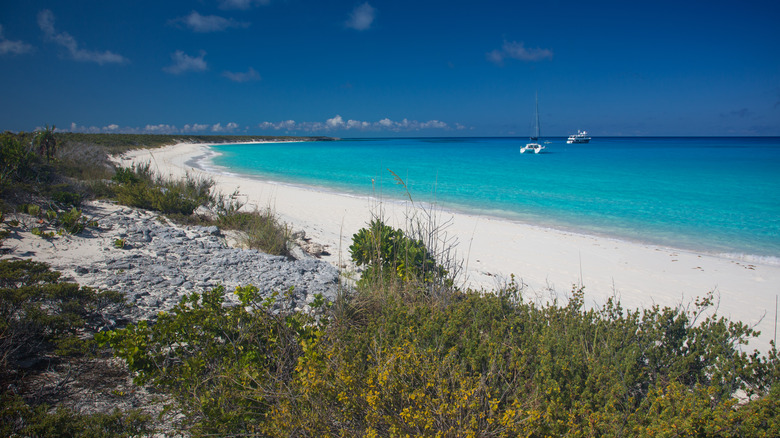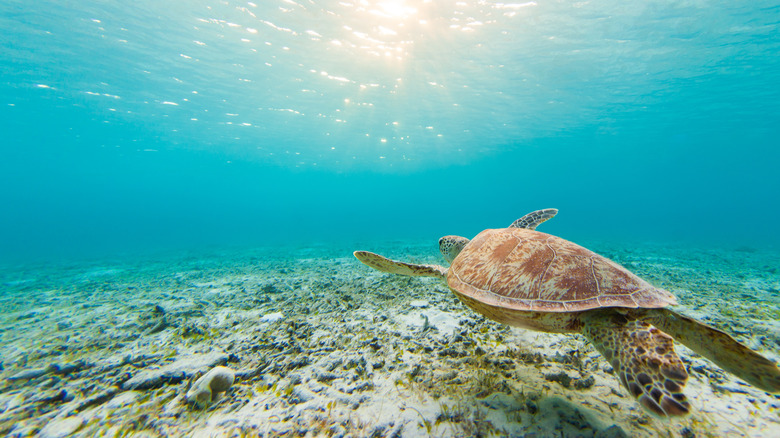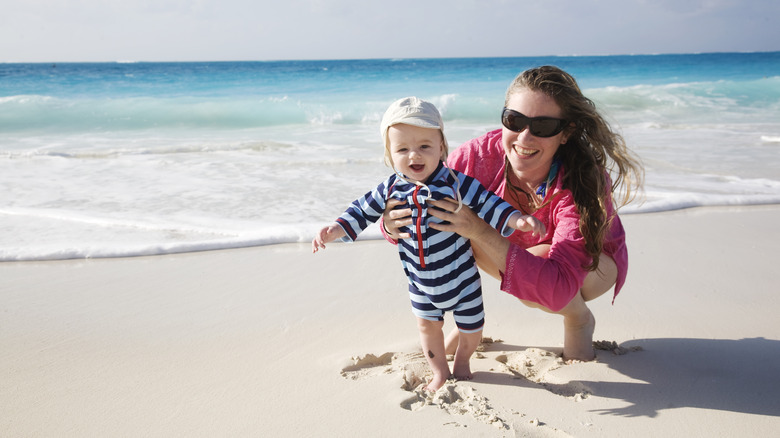This Underrated Island In The Bahamas Has One Of The Most Scenic National Parks
There's no doubt the Bahamas is filled with picture-perfect destinations that cater to every type of traveler's style. Whether it's luxurious beachside resorts, one-of-a-kind swimming experiences, or a vibrant local culture, this popular Caribbean country doesn't disappoint in terms of what to do and where to go, especially if you love adventure.
However, away from the bustle of Nassau and the historical sites of Freeport, Rum Cay's beautiful Conception Island National Park is a haven for wildlife enthusiasts, beach bums, and nature lovers who want to soak up the untouched magic of the Bahamas away from the crowds.
Officially established in 1964, Conception Island National Park covers 30,000 acres of protected waters, beaches, and mangroves — all of which are home to a wide variety of flora and fauna. Virtually uninhabited by humans for the past hundred years, the island is considered one of the most beautiful destinations in the Bahamas due to its pristine nature and thriving ecosystems. Dotted with ruins, teeming with a vibrant and diverse array of bird species, and surrounded by turquoise waters perfect for diving and snorkeling, Conception Island National Park is what nature lovers' dreams are made of.
A paradise for wildlife enthusiasts
One of the main reasons travelers make their way to Conception Island National Park is to catch a glimpse of the wildlife — specifically, the many species of endemic and migratory birds that both live on the island year-round or use it as a nesting and breeding ground during the spring and summertime. In fact, Conception Island is considered one of the most significant Important Bird Areas (IBA) in the Bahamas — meaning that it plays a vital role in the conservation of various bird species. Some notable species you can spot during your visit to Conception Island include pink flamingos, Bahamian parrots, Ospreys, Gray Kingbirds, Antillean Nighthawks, Mockingbirds, and the endangered Bahama woodstar, just to name a few.
But the wildlife spotting doesn't stop there. Back on the ground and the water, keep your eyes peeled for Green and Hawksbill turtles, especially along Conception Creek, as well as iguanas and various marine animals like sharks, dolphins, conchs, and other species of fish.
Due to its pivotal role in maintaining the local ecosystem's balance, visitors are highly encouraged to exercise caution when exploring the island. This includes watching wildlife from afar to prevent any unnecessary stress, carefully navigating the surrounding reefs, and avoiding feeding the animals.
Planning your visit to Conception Island National Park
Conception Island National Park is only accessible via boat — a short 15-mile sail from Long Island — and the island currently offers three moorings where large boats can anchor safely. Once docked, access to the island is completely free of charge, and there are no guards on duty.
Since the island is technically deserted, there are no formal accommodations for guests or visitors. However, nature camping on designated areas of the island is allowed as long as you follow basic Leave No Trace principles and clean up after yourself before leaving your campsite. Along with this, you'll also want to make sure you bring everything you need along with you — this includes your own food, water, and camping supplies if needed.
As for the best time to visit, traveling to Conception Island National Park between November and April means your trip will coincide with the dry season, which ensures you'll get to enjoy sunny days, warm weather, and optimal wildlife spotting opportunities. However, this is also the busy season, which means prices might be steep, and finding available accommodation might prove to be a little challenging. Alternatively, if your budget is on the tighter end, visiting the Bahamas between May and October means you'll enjoy more affordable accommodation and quieter beaches. Be warned, however, that this time coincides with hurricane season, so a little rain is to be expected.


